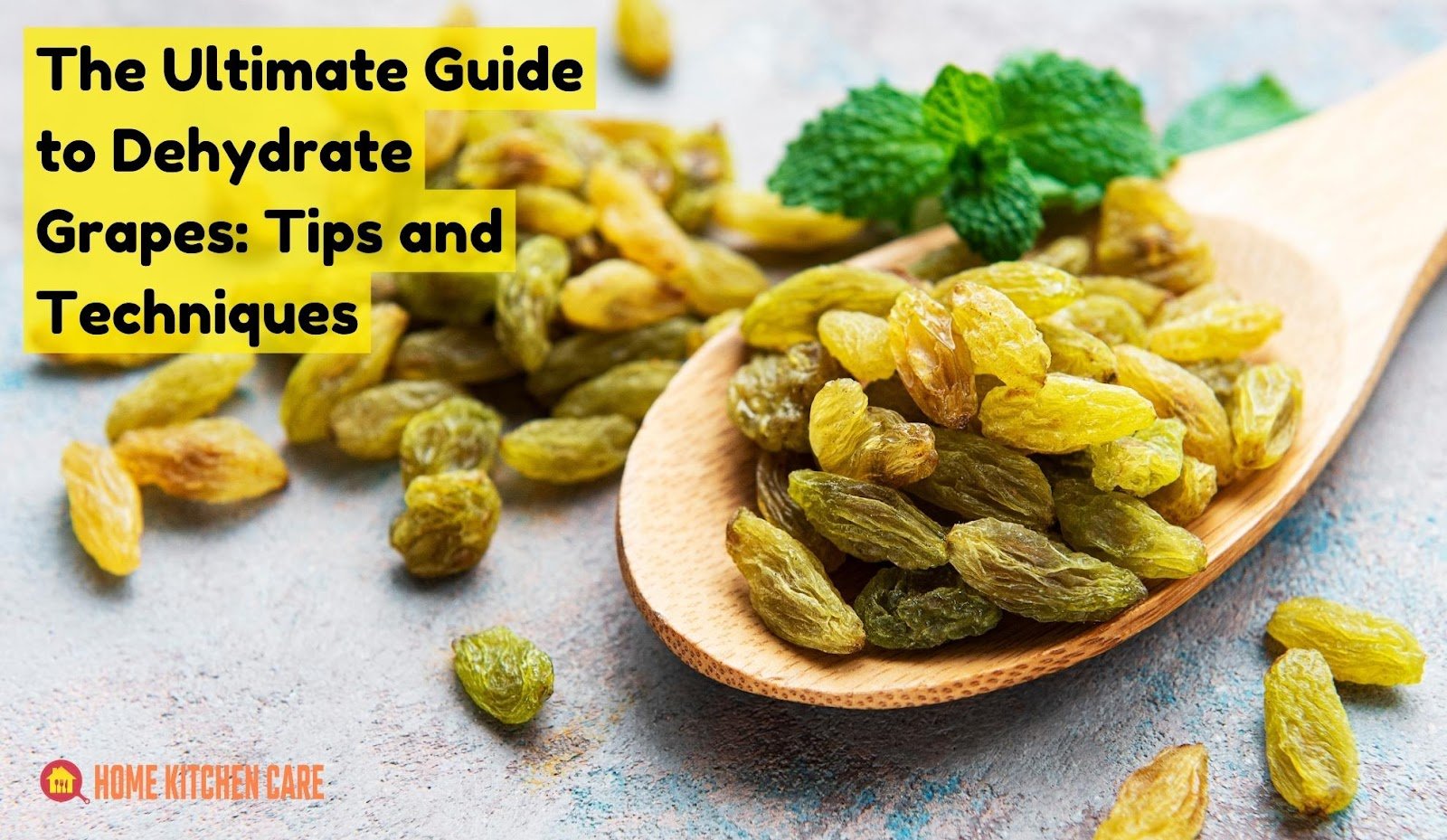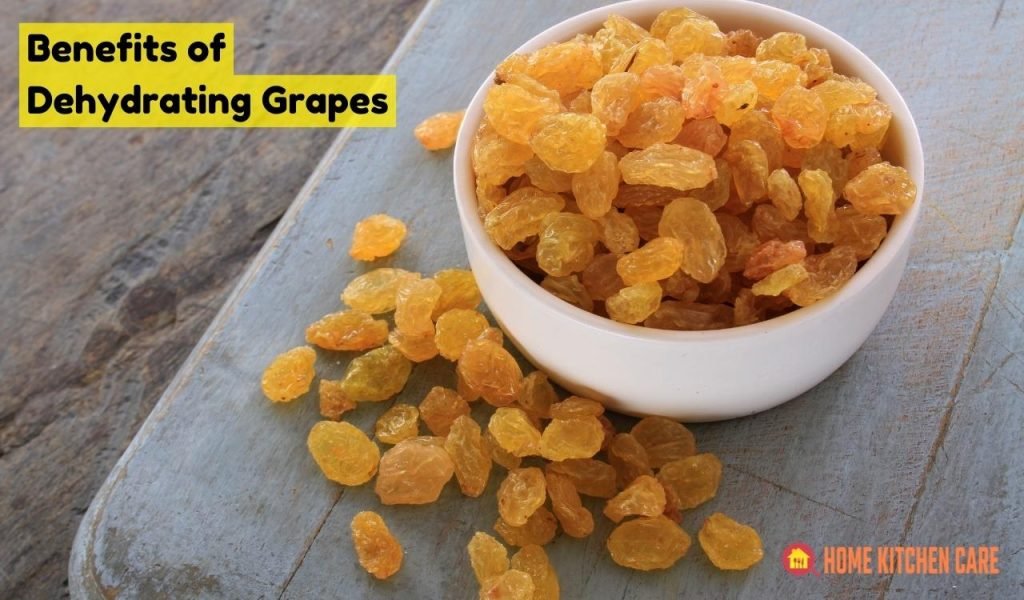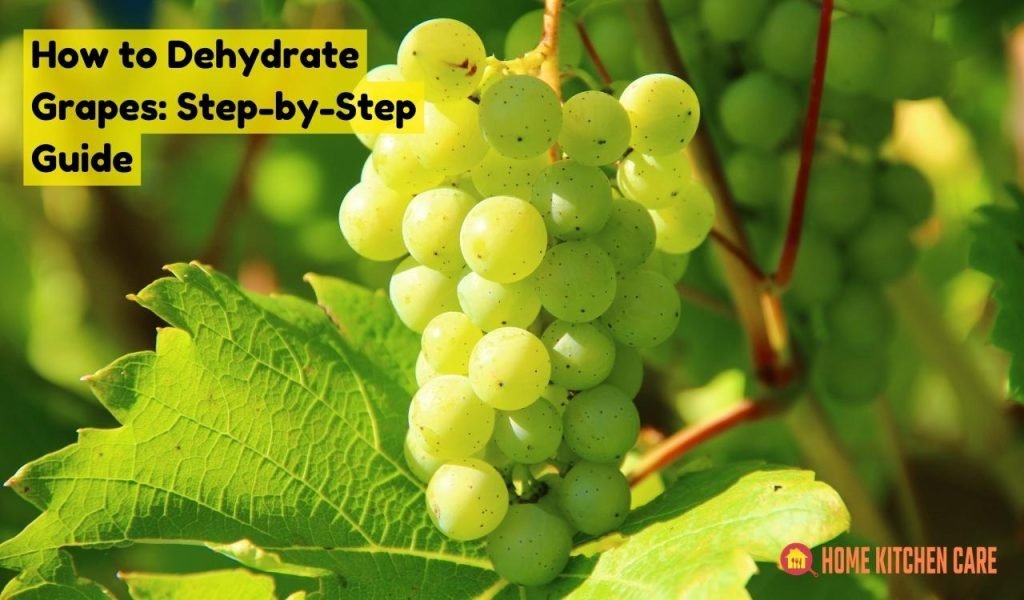Physical Address
304 North Cardinal St.
Dorchester Center, MA 02124
Physical Address
304 North Cardinal St.
Dorchester Center, MA 02124

Are you ready to embark on a delightful journey into the world of dehydrated grapes? Look no further! In this guide, we’ll unravel the secrets of transforming plump and juicy grapes into irresistibly chewy treats that are bursting with natural sweetness. Dehydrate grapes and unlock a whole new level of snacking pleasure, culinary creativity, and healthy indulgence.
Get ready to experience the magic of raisins as we delve into the simple yet captivating process of drying grapes to perfection. Whether you’re a seasoned food enthusiast or just curious to explore new flavors, this guide will equip you with the knowledge and techniques needed to achieve dehydrated grape perfection. So, grab your grapes and let’s dive in to uncover the wonders of dehydrating grapes together!
Main Summary: Dehydrate grapes
Dehydrate grapes to make delicious and nutritious raisins at home. Wash and dry grapes thoroughly, then evenly space them on a baking sheet. Set oven to low heat (170°F) and bake for 8-10 hours until fully dried. Savor the sweetness of homemade raisins—nature’s delightful treat!

Dehydrating grapes offers numerous benefits, making it a popular method of preserving and enjoying this versatile fruit. Let’s delve deeper into the advantages of dehydrating grapes:
The process of dehydration concentrates the natural sweetness of grapes while retaining their tartness. The resulting raisins possess a rich, robust flavor profile that adds depth and complexity to various dishes and snacks.
Dehydrated grapes have a significantly longer shelf life compared to fresh grapes. By removing the majority of their moisture content, dehydrated grapes become less susceptible to spoilage. Properly stored raisins can last for several months, making them an ideal pantry staple.
Dehydrated grapes are incredibly convenient, especially for those on the go. Their lightweight and compact nature make them easy to carry in backpacks, purses, or lunchboxes. Whether you’re hiking, traveling, or simply need a quick snack, dehydrated grapes provide a nutritious and energy-boosting option.
Dehydrated grapes offer a wide range of culinary possibilities. They can be used in baking to add a sweet and chewy texture to cookies, bread, and granola bars. Raisins are also popular in trail mixes, providing a burst of natural sweetness.
In savory dishes, such as tagines or pilafs, raisins contribute a delightful hint of sweetness and complexity. Additionally, raisins can be soaked in liquid, such as warm water or alcohol, to plump them up and infuse the liquid with their unique flavor.
Dehydrated grapes retain many of the nutrients present in fresh grapes. They are a good source of dietary fiber, potassium, and antioxidants. Raisins also contain iron, which is essential for maintaining healthy blood circulation. As a natural and unprocessed snack, dehydrated grapes offer a healthier alternative to processed and sugary snacks.
While fresh grapes are seasonal, dehydrated grapes are available year-round. By preserving grapes through dehydration, you can enjoy their flavors and benefits at any time, regardless of the season. This accessibility allows you to incorporate raisins into your cooking and baking endeavors whenever inspiration strikes.
Dehydrating grapes is an excellent way to reduce food waste. If you have an abundance of grapes that may otherwise spoil, dehydrating them can extend their usability and prevent them from going to waste. It’s an eco-friendly approach to utilizing surplus produce and promoting sustainability.
Dehydrated grapes can be a cost-effective option, especially when grapes are in season or available at discounted prices. By dehydrating them yourself, you can save money compared to purchasing commercially-produced raisins. It’s a budget-friendly way to enjoy the benefits of dehydrated grapes.

Dehydrating grapes at home is a straightforward process that allows you to create your own delicious and nutritious raisins. Follow this comprehensive step-by-step guide to ensure successful dehydration:
When dehydrating grapes, it’s important to be mindful of certain factors to ensure the best outcome. By avoiding these common pitfalls, you can achieve successful grape dehydration:
To promote even drying, avoid overcrowding the grapes on the dehydrator trays or baking sheet. Proper spacing allows for adequate air circulation, ensuring consistent results. Overcrowding can lead to uneven drying, with some grapes remaining moist while others become overly dry and brittle.
Keep a close eye on the drying process to prevent under or over-drying the grapes. Under-drying can result in raisins that retain excessive moisture, making them susceptible to mold. On the other hand, over-drying can lead to raisins that are excessively tough and lose their desirable texture. Regular monitoring and periodic testing for doneness will help you achieve the perfect balance.
Before starting the dehydration process, carefully inspect the grapes and remove any that are damaged, moldy, or unripe. Damaged grapes can negatively impact the overall quality of the raisins and reduce their shelf life. Removing them ensures that only the best grapes are used for dehydration.
While pre-treating the grapes is optional, it is recommended to prevent darkening and maintain a visually appealing appearance for the raisins. Pre-treatment involves dipping the grapes in a solution of lemon juice or citric acid mixed with water for a few minutes before drying. This simple step can help preserve the natural color of the raisins and enhance their visual appeal.
After dehydrating the grapes, it’s crucial to store the raisins properly to maintain their quality. Transfer the completely cooled raisins to airtight containers, such as glass jars or resealable bags, to protect them from moisture and maintain their freshness. Avoid exposure to humidity, as it can lead to spoilage and a shorter shelf life.
While it may be tempting to speed up the drying process by using higher temperatures, it’s best to stick to low and gentle heat. High temperatures can result in uneven drying, with some grapes becoming overly dried while others remain under-dried. Patience and consistency in using the recommended drying temperature will yield the best results.
Once the grapes have been dehydrated, allow them to cool completely before storing them. Cooling ensures that any residual moisture is evenly distributed throughout the raisins, reducing the risk of condensation and maintaining their quality. Avoid rushing this cooling process to preserve the desired texture and flavor.
Dehydrated grapes, commonly known as raisins, are not only a delicious and nutritious snack on their own but also a versatile ingredient that can elevate a wide range of recipes. Let’s explore some creative and mouthwatering recipes that make excellent use of dehydrated grapes:
Ingredients:
Instructions:
Ingredients:
Instructions:
Ingredients:
Instructions:
Ingredients:
Instructions:
To ensure you achieve the best results when dehydrating grapes, consider the following tips and tricks:
Choose grapes that are ripe, firm, and free from any signs of decay or damage. Seedless varieties like Thompson Seedless or Flame Seedless are popular choices for dehydrating due to their natural sweetness and smaller size, which allows for more even drying.
Wash the grapes thoroughly and remove any stems. Pat them dry with a clean kitchen towel or paper towel before proceeding with the dehydration process.
If you’re working with larger grapes, such as Red Globe or Concord, consider slicing them in half lengthwise. This helps to expose more surface area, allowing for better air circulation during drying and faster moisture evaporation.
To prevent the grapes from darkening during the dehydration process, you can use a pre-treatment method. One option is to dip the grapes in a solution of lemon juice or citric acid mixed with water for a few minutes before drying. This acidity helps to preserve the natural color of the grapes.
Arrange the grapes in a single layer on the dehydrator trays or baking sheets, making sure they are evenly spaced. This ensures proper air circulation around each grape, promoting even drying and preventing the risk of mold or spoilage.
Set the dehydrator or oven temperature to the recommended range for grape dehydration, usually between 125°F (52°C) and 135°F (57°C). Avoid higher temperatures as they may cause the grapes to over-dry or become too brittle. The drying time can vary depending on the grape variety, size, and moisture content. It typically ranges from 24 to 48 hours, so be patient and check for the desired texture and moisture level.
To check if the grapes are fully dehydrated, remove a few samples and allow them to cool for a few minutes. Gently squeeze them to feel if they are pliable and slightly leathery, without any signs of moisture. If they are too soft or sticky, they need more drying time. On the other hand, if they are overly dry and crunchy, they may have been over-dehydrated.
Once the grapes are fully dehydrated, let them cool completely before transferring them to airtight containers such as glass jars or resealable bags. Store the containers in a cool, dry, and dark place to maintain the quality of the dehydrated grapes. Properly dehydrated and stored raisins can last for several months, providing a delicious and nutritious snack or ingredient for your culinary creations.
In conclusion, mastering the art of dehydrating grapes opens up a world of possibilities. From enjoying them as a wholesome snack to incorporating them into various recipes, the versatility of dehydrated grapes, or raisins, knows no bounds.
By following the right techniques, selecting quality grapes, and paying attention to essential details, you can achieve perfect results every time. So, embark on this culinary adventure and savor the delightful flavors of homemade raisins in your creations.
To dehydrate grapes, start by washing them thoroughly and removing any stems. You can choose to leave them whole or slice larger grapes in half for faster drying. Arrange the grapes in a single layer on a dehydrator tray or baking sheet, ensuring proper airflow. Set the dehydrator temperature to around 125°F to 135°F (52°C to 57°C) and allow them to dry for 24 to 48 hours, or until they reach the desired texture.
The ideal temperature for dehydrating grapes is typically between 125°F and 135°F (52°C and 57°C). This temperature range allows for gradual moisture removal while preserving the grapes’ natural flavor and color. Avoid higher temperatures, as they may result in uneven drying or overly dry raisins.
The drying time for grapes can vary depending on various factors such as grape size, moisture content, and drying conditions. On average, it takes approximately 24 to 48 hours to fully dehydrate grapes. However, it’s essential to monitor the grapes regularly and adjust the drying time as needed to achieve the desired texture.
Pre-treating grapes is optional but can help prevent them from darkening during the dehydration process. If desired, you can dip the grapes in a solution of lemon juice or citric acid mixed with water for a few minutes before drying. This pre-treatment can help retain the grapes’ natural color.
Yes, you can dehydrate grapes in the oven. To do so, preheat your oven to the lowest possible temperature (usually around 175°F or 80°C) and spread the grapes in a single layer on a baking sheet lined with parchment paper. Leave the oven door slightly ajar to allow moisture to escape. Dry the grapes for the recommended time, checking periodically for desired dryness.
There are various methods for dehydrating grapes, including using a dehydrator, oven, or even the sun. Dehydrators offer precise temperature control and even airflow, making them a popular choice. However, if you don’t have a dehydrator, the oven can be used with low heat. Alternatively, sun-drying requires warm, dry weather and can be done by placing the grapes on trays or screens in direct sunlight.
Seedless grape varieties like Thompson Seedless, Flame Seedless, or Red Globe are often preferred for dehydrating due to their natural sweetness and smaller size. However, you can experiment with different grape varieties to find the flavors and textures that you enjoy the most.
Once fully dehydrated, allow the grapes to cool completely. Then store them in airtight containers, such as glass jars or resealable bags, in a cool, dark place. Properly stored dehydrated grapes can last for several months, retaining their flavor and texture.
Yes, you can dehydrate grapes without a dehydrator. The oven can be used as an alternative method. Simply follow the same steps for preparing and arranging the grapes on a baking sheet lined with parchment paper. Set the oven to the lowest temperature, leaving the door slightly open to allow moisture to escape.
Dehydrated grapes, or raisins, are a versatile ingredient that can be used in various recipes. They can be added to baked goods like bread, cookies, and muffins for a sweet burst of flavor. Raisins also work well in salads, pilafs, trail mixes, and granola bars. Additionally, they can be enjoyed on their own as a healthy and delicious snack. Let your creativity guide you when incorporating dehydrated grapes into your culinary creations.